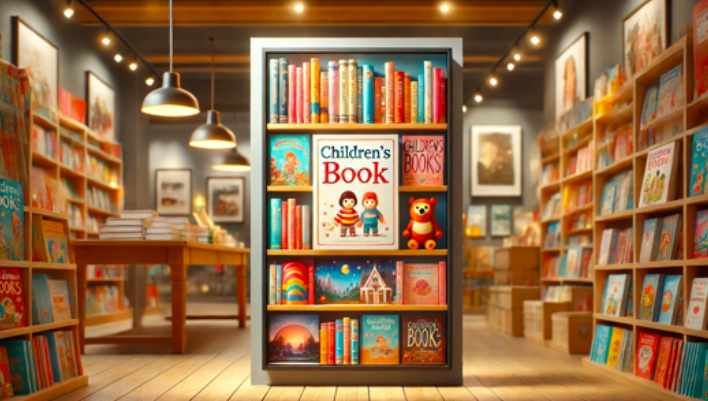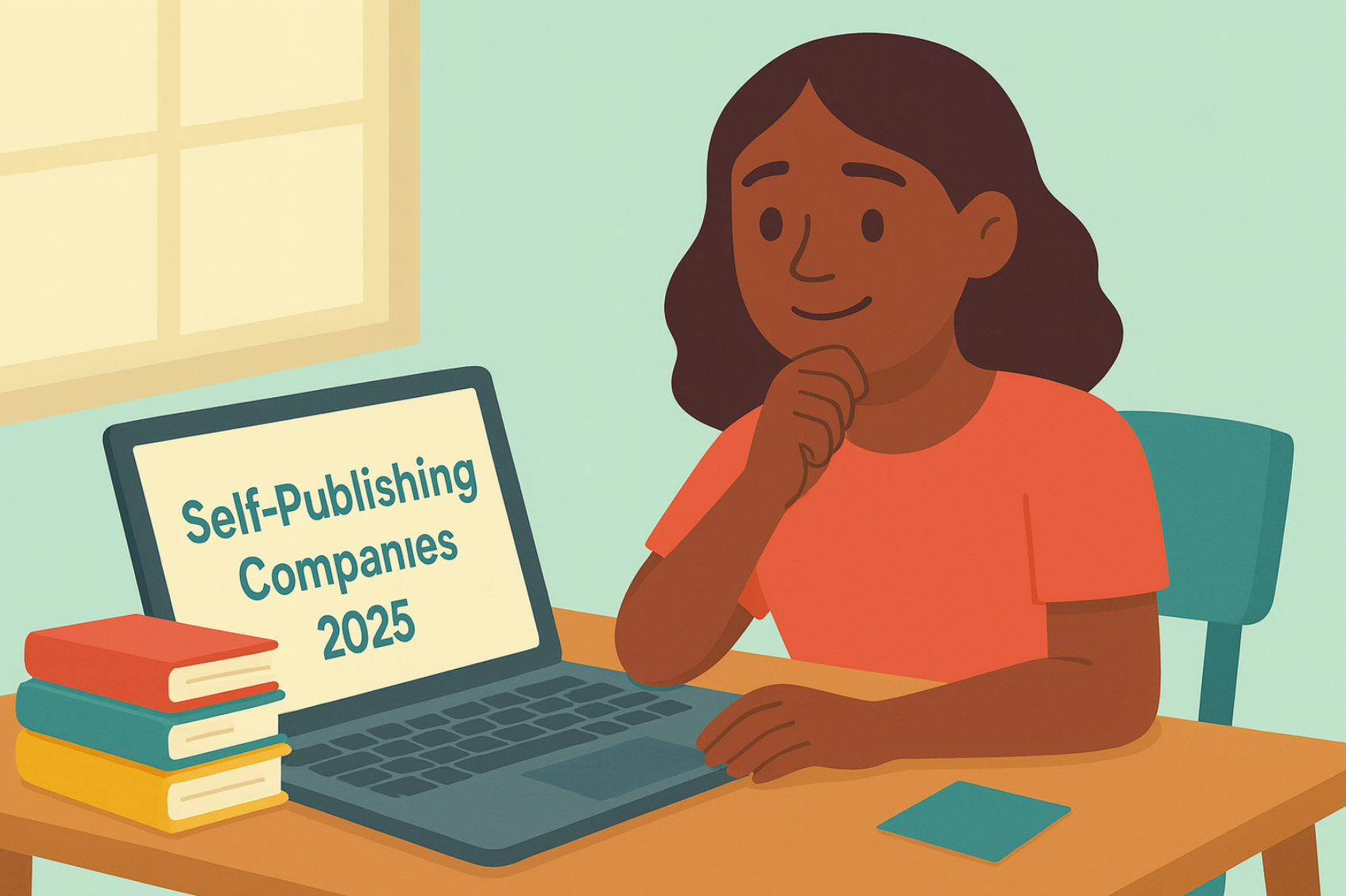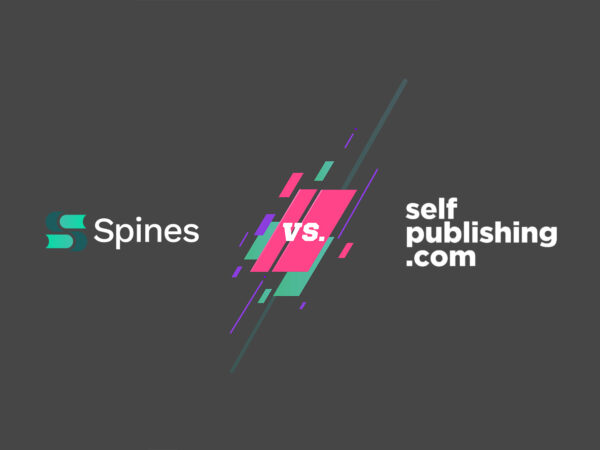Publishing a children’s book is an adventure marked by creativity, dedication, and a deep understanding of one’s audience. The children’s book publishing landscape is vibrant and varied, offering multiple pathways to seeing one’s work in print. A successful children’s book author navigates this landscape by understanding both the creative and business aspects of publishing. At its core, this industry aims to deliver stories that educate, entertain, and inspire young minds. However, the journey from manuscript to published book can be daunting, especially for new authors. It is crucial to understand the two primary publishing routes: traditional and self-publishing, each with its unique set of steps, expectations, and challenges.
Traditional publishing involves partnering with established publishing houses that manage the production, distribution, and marketing of the book. This route often requires securing a literary agent who will represent the author and their work to publishers. On the other hand, self-publishing puts the author in the driver’s seat for all aspects of the publishing process, from choosing the cover design to marketing the finished product. This method has become increasingly accessible thanks to platforms such as Spines and Amazon KDP.
Embarking on the path to publish a children’s book successfully demands not just creativity in storytelling, but also a strategic understanding of the publishing industry. This guide aims to show you how to publish a children’s book successfully.
Here are the key tips:
- Refine Concept: Understand your target audience and create appropriate themes.
- Write and Revise: Ensure structure, pacing, and language suit young readers.
- Illustrations: Choose visuals that enhance the story.
- Publishing Process: Decide between traditional and self-publishing paths.
- Market and Promote: Utilize school visits, social media, and library collaborations.
Understanding Your Options: Traditional vs. Self-Publishing
Navigating the world of publishing involves choosing between two main routes: traditional publishing and self-publishing. Each path offers distinct advantages and challenges, particularly in the realm of children’s literature. Understanding the differences between traditional and indie publishing is crucial for making an informed decision.
Traditional Publishing
In traditional publishing, traditional publishers manage the production, distribution, and marketing of the book. Authors typically work with literary agents who represent their manuscripts to publishing houses. A literary agent’s role is crucial; they are not only gatekeepers to major publishers but also advocates for the author’s work, negotiating contracts and ensuring the best deal possible.
Once a manuscript is accepted, traditional publishing houses handle the majority of the publishing process. This includes editing, designing, illustrating, marketing, and distributing the book. Authors benefit from the expertise and resources of established publishers, which can be particularly advantageous in the competitive children’s book market.
Pros:
- Access to top-tier editorial and marketing support.
- Broader distribution in bookstores and libraries.
- Enhanced credibility in the eyes of many industry professionals and readers.
Cons:
- Longer time to market, as the publishing process can take several years.
- Less creative control over book design and marketing.
- Lower royalty rates compared to self-publishing.
Self-Publishing
Self-publishing offers authors complete control over every aspect of their book’s production and sale. Authors can self-publish their books using platforms like Amazon’s Kindle Direct Publishing and other print-on-demand services, enabling them to publish without the need for large upfront costs or inventory.
Authors can adjust the book’s sale price, design, and marketing strategies as needed, responding quickly to market demands or reader feedback.
Pros:
- Higher royalties per book sold.
- Complete creative control over every element of the publishing process.
- Faster time to market, sometimes within months or even weeks.
Cons:
- Requires a significant upfront investment in editing, design, and marketing.
- Less access to traditional distribution channels, which can limit exposure.
- Greater responsibility on the author for marketing and sales, which can be daunting without the right skills or resources.
Choosing between traditional and self-publishing depends largely on the author’s goals, resources, and desired level of involvement in the publishing process. For those seeking extensive support and broad distribution, traditional publishing may be the better choice. However, for authors who prefer more control and potentially higher profits, self-publishing could be more suitable.
Step 1: Refining Your Book Concept
A critical initial step in publishing a children’s book is refining your book concept, which hinges significantly on understanding your target audience, crafting compelling characters, and choosing themes that resonate with young readers. This foundational stage sets the trajectory for how well your book will connect with its intended audience and influence its success in the competitive market of children’s literature.
Your Publishing Journey Awaits – Start NowUnderstanding Your Target Audience
Children’s books, including picture books, are categorized based on age groups: early readers (ages 5-7), middle grade (ages 8-12), and young adults (ages 12+). Each category has distinct cognitive and emotional development stages, requiring tailored content and language. For example, books for early readers often use simple sentences and basic vocabulary to match their reading skills, whereas middle-grade books can explore more complex narratives and moral dilemmas suited to their greater understanding and maturity.
Knowing your audience also involves understanding their interests, challenges, and what type of story themes will be both relevant and engaging to them. This knowledge is critical in crafting a story that not only entertains but also connects and provides value to the reader’s experiences.
Developing Compelling Characters and Engaging Stories
Characters are the heart of any children’s book. Young readers need characters they can admire, relate to, or aspire to be like. Effective characters often reflect the reader’s age and experiences or offer a window into new experiences and worlds.
To develop a compelling narrative, consider incorporating elements of adventure, mystery, friendship, or personal growth that can captivate young minds. Stories that involve challenges and resolutions can help children understand the world around them and develop empathy.
Interaction between characters, such as dialogue and actions, should be authentic and age-appropriate, helping to drive the narrative forward and maintain engagement.
Aligning with Appropriate Themes and Content
The themes chosen for children’s books should be appropriate for the age group and sensitively handled, especially when dealing with complex issues. Themes like family, friendship, courage, and discovery are popular because they offer universal lessons and are adaptable to various narrative styles.
It’s also important to ensure that content is not only suitable for children in terms of language and complexity but also inclusive and representative of diverse experiences. This inclusion helps in nurturing a well-rounded worldview for young readers.
Educators, parents, and librarians can be invaluable resources for feedback on theme suitability and content appropriateness, providing insights that can fine-tune your book’s impact.
Refining your book concept isn’t just about what you think is important; it’s about creating a meaningful, enjoyable experience for the child reader. This early phase of development is crucial in setting the foundation for a children’s book that is engaging, educational, and enthusiastically received by its audience.
Step 2: Writing and Revising Your Manuscript
After refining your book concept and thoroughly understanding your target audience, the next pivotal step in the journey of publishing a children’s book is writing and revising your self-published book manuscript. This phase is both creatively demanding and technically challenging, as it involves crafting a story that is engaging, well-paced, and appropriately complex for the intended reader. Here’s how to tackle this crucial step:
Key Elements of a Successful Children’s Book
- Structure: A clear and coherent structure is essential in children’s literature. For younger readers, this might mean a simple, linear narrative, while older children might enjoy and benefit from slightly more complex plots with subplots and varied character viewpoints. However, every children’s book should have a well-defined beginning, middle, and end to provide a sense of completeness and satisfaction.
- Pacing: The pacing needs to be tight enough to keep a child’s attention from beginning to end. Avoid overly lengthy descriptions and ensure that each scene contributes to the progression of the story. Actions and dialogues should be energetic and dynamic, propelling the plot forward and keeping young readers engaged.
- Language: Language in children’s books should be accessible and appealing to its intended age group. Use vivid, concrete language that paints clear pictures but is also easy to understand. Playfulness with language through rhymes, rhythmic patterns, or fun vocabulary can also add to the readability and enjoyment of the book for children.
Role of Professional Editors and Beta Readers
Professional editors specializing in children’s literature can provide invaluable insights into the overall quality of the manuscript. They look at your work critically, checking for consistency in voice, language appropriateness, and thematic integrity. They also ensure that the story is developmentally suitable for the age group it targets.
Beta readers, particularly those familiar with children’s literary preferences and cognitive abilities (like educators or librarians), can offer a perspective on how engaging and understandable your manuscript is for children. Their feedback can highlight areas where the pacing might lag or where the plot might confuse younger readers.
Advice on Revisions and Incorporating Feedback
- Be open to feedback and ready to make significant changes based on the insights from editors and beta readers. Sometimes, this might mean reworking major parts of your story or changing how a character reacts in certain situations to make them more relatable or realistic for children.
- Focus on clarity and motivation in your revisions. Each character’s motivations should be clear and believable, helping young readers to understand and empathize with them. Similarly, the action should be easy to follow and logically structured.
- Pay close attention to the narrative voice. It should be consistent and appropriate for the age group. For instance, a book aimed at very young children should have a warm, simple narrative tone, while a book for middle graders can incorporate a more complex, nuanced voice.
- Finally, use the revision process as an opportunity to enhance the sensory elements of your story. Rich, descriptive details can make the world you’re writing about come alive to a young reader, making the experience of reading your book more engaging and memorable.
Writing and revising a children’s book manuscript is both an art and a craft. It requires a deep understanding of your audience, a clear vision of your story, and the flexibility to reshape your work based on expert feedback. With diligence and creativity, this process refines your manuscript into a story that can captivate and inspire young minds.
Step 3: Choosing the Right Illustrations
Children’s book authors collaborate with illustrators to create engaging visuals that play a critical role in children’s books, especially in picture books where images are not just complementary but central to the storytelling. This step in the publishing process is vital, as the visual elements need to captivate, engage, and help convey the story’s message to young readers. Choosing the right illustrations involves a keen understanding of your audience and a collaborative effort with a professional illustrator.
The Importance of Visuals in Children’s Books
- For many children, particularly early readers and picture books, illustrations are an entry point into the story. They provide visual clues that help young readers interpret the text and can aid in the development of literacy skills by reinforcing words with images.
- Illustrations can set the tone of the book, convey emotions, and create a world that young readers can immerse themselves in. In stories for children, visuals often carry a significant portion of the narrative, telling parts of the story that the text does not cover.
- A well-illustrated book can also appeal to adults, such as parents and teachers, making it more likely to be picked up and shared with children.
Collaborating with a Professional Illustrator
When working with an illustrator, clear communication is essential. As an author, you should provide a detailed brief of the story, character descriptions, and any specific scenes you envision. However, it’s also important to allow the illustrator some creative freedom, as they might bring fresh ideas and perspectives that can enhance the story.
Your Publishing Journey Awaits – Start NowDiscuss and agree upon important aspects such as style, color palette, character appearances, and how the illustrations will interact with the text. It’s beneficial to review a portfolio of previous work to ensure their style aligns with your vision for the book.
Considerations for Selecting Illustrations
- Age Appropriateness: Ensure that the style and content of the illustrations are appropriate for the age group of your target audience. For instance, books for very young children benefit from bright, bold, simple images, whereas older children might appreciate more detailed and nuanced artwork.
- Enhancing the Storytelling: Illustrations should complement and enhance the text, not overshadow it. Each illustration should contribute to the story, whether by setting the scene, showing character actions, or depicting key events that add to the narrative flow.
- Cultural and Contextual Relevance: It’s important that the visuals reflect a diversity that is inclusive of different backgrounds and experiences. This helps in making the book relevant and relatable to a wide range of children, promoting a broader understanding and acceptance from a young age.
Selecting the right illustrations is a pivotal step in the creation of a children’s book. Effective visuals not only enrich the reading experience but also deepen the reader’s connection to the story, making the book a cherished part of their learning and growth. Collaborating closely with a skilled illustrator can turn the written word into a captivating visual journey that resonates with and inspires young minds.
Step 4: Navigating the Publishing Process
Publishing a children’s book can be navigated through two main avenues: the traditional publishing route, often involving a publishing company or self-publishing. Each path requires different strategies, from querying literary agents to choosing the right self-publishing platform. Additionally, legal aspects such as ISBNs and copyrights are critical to understand regardless of the chosen path.
Traditional Publishing Route
- Querying Literary Agents:
- Start by researching agents who specialize in children’s literature and are open to submissions. Check resources like the Association of Authors’ Representatives (AAR) or Writer’s Market for comprehensive lists.
- Tailor your query letter to each agent by mentioning why you are approaching them specifically (e.g., they represent authors you admire or specialize in your book’s genre).
- Prepare a compelling query letter that includes a brief synopsis of your book, an introduction to your main characters, the age group your book targets, and any relevant information about yourself as an author (e.g., previous publications or relevant credentials). This is crucial for getting your children’s book traditionally published.
- Writing a Query Letter:
- Your query letter should be concise—no more than one page. Start with a hook that captures the essence of your story, followed by a brief plot summary and character introduction.
- Include a short author bio, mentioning any writing credentials, awards, or pertinent experiences. Conclude with a polite sign-off, thanking the agent for their consideration.
- Expectations from a Publishing Deal:
- If an agent decides to represent you, they will pitch your book to publishers. Once a publisher expresses interest, negotiations for a publishing deal will begin.
- Understand that traditional publishing deals involve discussions around advances, royalties, rights, and other contract specifics. It’s advisable to have an agent or a lawyer review the contract to ensure your best interests are protected.
Self-Publishing Route:
1. Choosing the Right Platform:
- Popular platforms for self-publishing include Amazon’s Kindle Direct Publishing (KDP), Spines, and Apple Books. Each platform has its pros and cons regarding cost, reach, and user-friendliness.
- Consider how each platform markets to your target audience and what distribution channels they offer.
2. Understanding the Costs:
- Self-publishing generally involves upfront costs for editing, design, formatting, and marketing. Budgeting for these can help manage expenses effectively.
- Many platforms offer print-on-demand services, which can reduce the financial risk of unsold inventory.
3. Setting Up Distribution:
- Decide whether to distribute your book globally or focus on specific markets. Some platforms allow you to control where your book is sold.
- Look into additional distribution channels like local bookstores or school libraries, which can be effective for children’s books.
Handling ISBNs, Copyrights, and Other Legal Aspects:
- ISBNs: An International Standard Book Number (ISBN) is essential for distribution and sales tracking. Self-publishers can purchase ISBNs through agencies like Bowker in the U.S. Each format of your book (e.g., paperback, hardcover, eBook) requires a separate ISBN.
- Copyrights: Registering your book with the Copyright Office provides legal protection against unauthorized use of your text or illustrations.
- Other Considerations: Be aware of other legal requirements such as privacy laws if you collect data from readers (important for marketing), or agreements with collaborators like illustrators.
Navigating the publishing process efficiently requires a clear understanding of both routes and their respective requirements. By preparing adequately, you can ensure a smoother journey from manuscript to published book.
Revolutionizing Publishing: Spines’ Innovative Approach
Spines, previously known as BooxAI, is transforming the traditional publishing model with its innovative, AI-enhanced platform. Spines streamlines the publishing process, making it faster, more affordable, and more accessible than ever before.
Why Spines Stands Out:
- Speed: Spines reduces the traditional publishing timeline from over six months to under 30 days, enabling authors to swiftly move from manuscript to published book.
- Transparency and Ease of Use: The intuitive dashboard allows authors to easily navigate through the publishing process—from initial manuscript upload to final distribution—while maintaining full control and visibility over each step.
- Cost Efficiency: With competitive pricing and a high royalty share of 100%, Spines democratizes the publishing process, making it financially accessible for all authors.
- Global Reach: Books published through Spines are distributed globally across major retailers like Amazon and Barnes & Noble, ensuring authors’ works reach a worldwide audience.
- Technological Innovation: Spines harnesses AI for tasks such as cover design, proofreading, and audiobook creation, enhancing quality and efficiency while reducing the potential for human error.
- Supportive Services: From AI-generated cover designs to professional editing and global distribution, Spines provides comprehensive services to ensure every book achieves its maximum potential.
Spines represents a significant departure from conventional publishing barriers, offering a modern solution that empowers authors with speed, efficiency, and global access. It’s an ideal platform for authors seeking to bypass the complexities of traditional publishing and embrace a smoother, more rewarding publishing journey. Sign up for free to start your publishing journey with Spines.
Step 5: Marketing and Promoting Your Book
Once your children’s book is published, the next crucial step is marketing and promoting it to reach your target audience effectively. Both traditional and self-published authors must be proactive in marketing to ensure their book stands out in a crowded market. Here are some strategic approaches and tips for promoting your children’s book.
Effective Marketing Strategies:
- School Visits: One of the most direct ways to reach your target audience is by organizing readings and interactive sessions in schools. These visits not only help promote your book but also provide valuable feedback from your primary audience—children. Coordinate with teachers and school librarians to set up these visits, focusing on how your book can complement their educational goals.
- Social Media: Utilize platforms like Instagram, Facebook, and Pinterest to reach parents and educators. Share engaging content such as behind-the-scenes looks at the writing process, illustrations, and events. Social media ads targeted at regions or groups that show interest in children’s books can also be effective.
- Collaborations with Libraries: Libraries are key allies in promoting children’s literature. Host events, readings, or workshops at local libraries. Getting your book into library catalogs can also boost visibility and credibility.
Building an Author Platform:
Establishing a robust author platform helps you connect with readers, publishers, and peers. Create a professional website with a blog where you can share updates, writing tips, and more about your books. Newsletters are another great tool to keep your audience engaged and informed about new releases and events.
Engaging with the children’s book community through forums, associations, and writing groups can provide support and opportunities for cross-promotion and valuable industry insights.
Tips for Self-Published Authors:
- As a self-published author, you’ll need to handle much of the marketing yourself. Invest time in learning basic digital marketing skills such as SEO for your content, and consider tools like Google Ads and Amazon’s advertising options.
- Reviews are crucial. Encourage readers to leave reviews on online platforms and consider sending copies to children’s book bloggers and influencers for a broader reach.
- Explore merchandising options related to your book’s theme or characters, which can supplement your income and boost your book’s visibility.
Marketing a children’s book requires creativity and persistence. By leveraging these strategies, you can create a strong presence for your book in the children’s market, ensuring it reaches the hands and hearts of eager young readers and their caregivers.
Final Thoughts
Successfully publishing a children’s book is a journey through distinct and essential steps: refining your book concept to resonate with your target audience, diligently writing and revising your manuscript, selecting compelling illustrations that enhance your narrative, navigating the publishing process efficiently, and creatively marketing your book to reach the widest possible audience. Each phase requires commitment, creativity, and a deep understanding of both the industry and your young readers.
To all aspiring children’s book authors—dare to dive into this rewarding endeavor. Your unique stories are needed to inspire, educate, and entertain the next generation. As you embark on your publishing journey, remember to stay resilient, keep your audience at the heart of your work, and continually engage with the vibrant community around you. In a competitive market, your passion, dedication, and genuine connection with readers will distinguish your books and pave the way for your success.
Your Publishing Journey Awaits – Start Now






